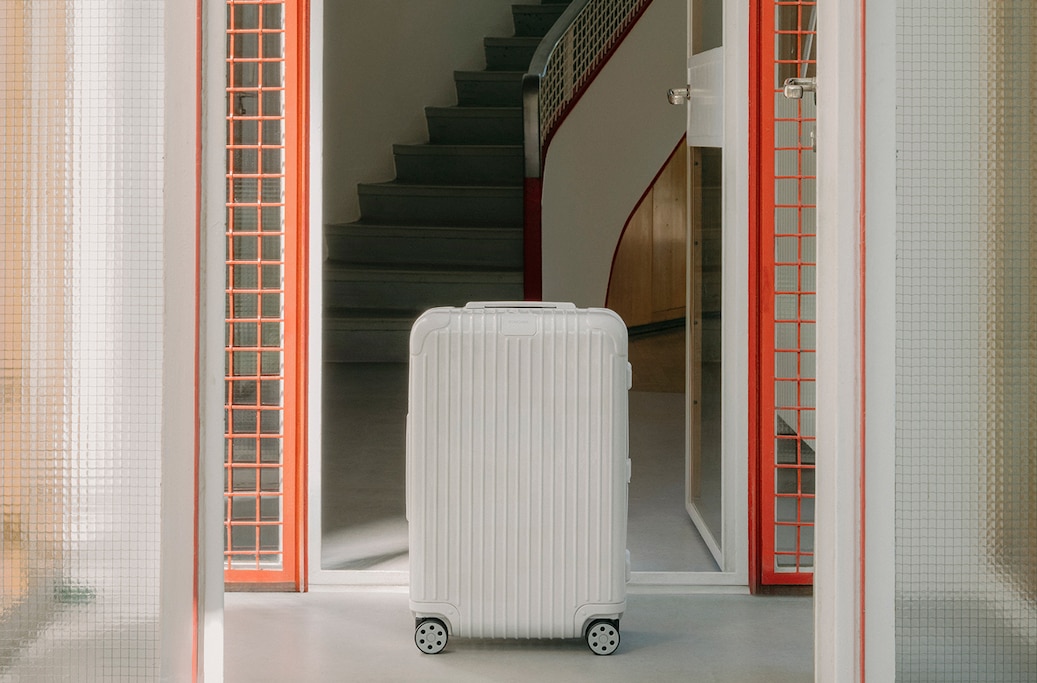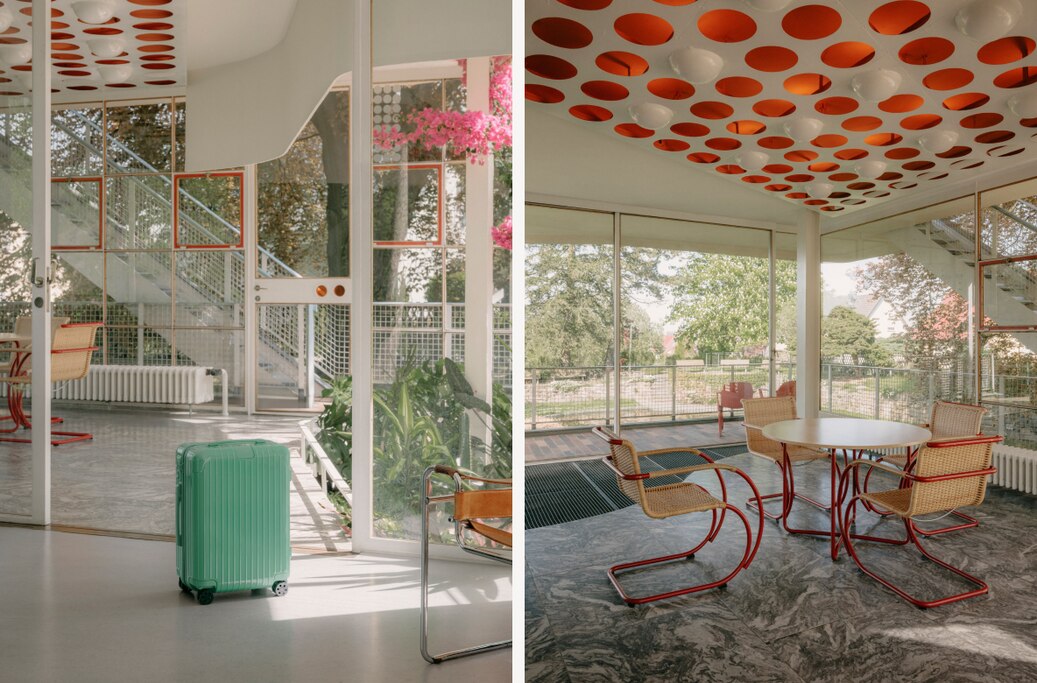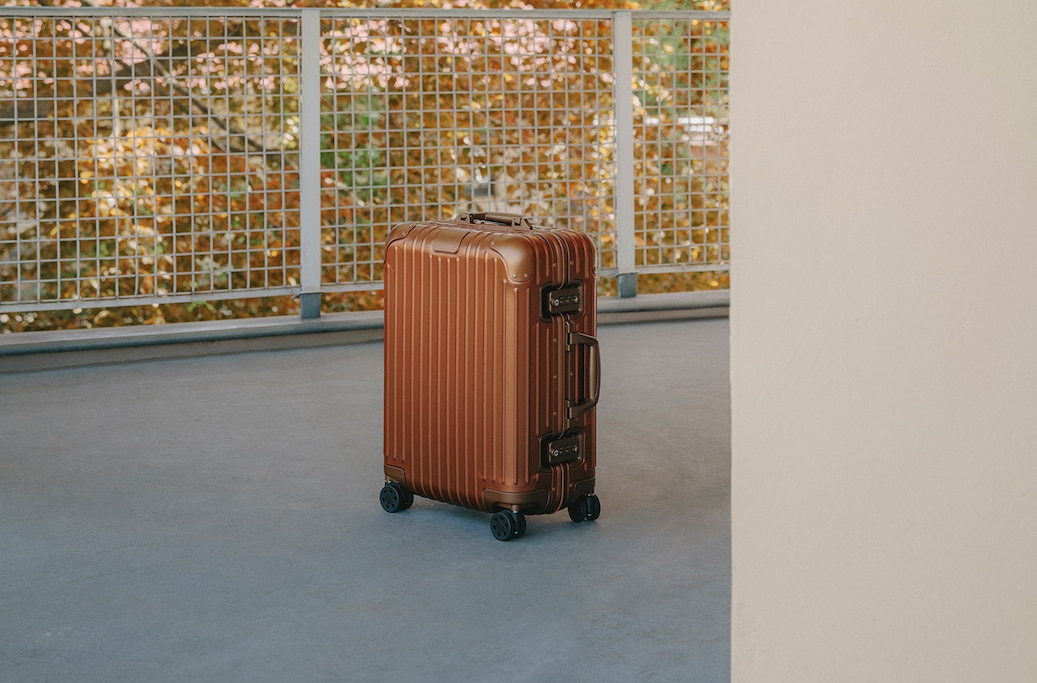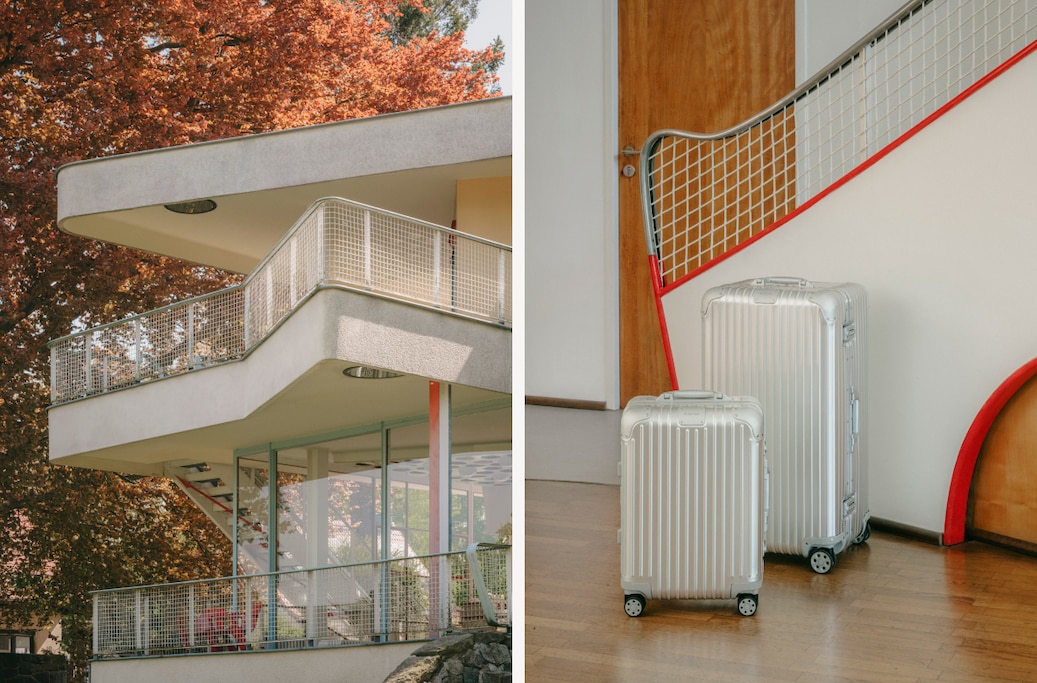Your Shopping bag
YOU MIGHT ALSO LIKE
Accessorise your RIMOWA with stickers, luggage tags and more.
Total (0.0 items)
Be advised that changing your location will remove the contents from your bag.
Asterisk, Unfortunately, we do not currently offer online shopping in these locations.
RIMOWA continues its ongoing series spotlighting icons of architectural design.
The Schminke house is a family home like no other. Built in Löbau, Saxony, between 1930 and 1933, the edifice was commissioned by Charlotte and Fritz Schminke, partners in business and life. It was to accommodate a modern house for a family with four children, as well as function as the site of production for their flourishing noodle factory, which eventually earned it the nickname of the ‘Pasta Steamer.'


Discover the Essential collection
Today, the Schminke House is a modernist icon, but it was recognized for its innovation at the time, and in 1978, it was granted special monument protection. The architect responsible was Hans Scharoun, best known as the architect of the Berlin Philharmonic concert hall.
The house’s curved, bright white façade, complete with porthole windows and external staircases, evokes the design of a ship – a defining characteristic of Scharoun’s work. Raised in the coastal city of Bremerhaven, the architect often incorporated metal staircases, railings, balconies, and round windows, paying homage to his maritime roots.
Blurring the boundary between architecture and nature, the interior embraces a sense of fluidity. Floor-to-ceiling windows open up the living space to the outdoors, while inside, rooms seem to merge effortlessly. Only sliding doors and curtains create subtle separations, with form and color reinforcing the spatial arrangement.


Discover the Original collection
Scharoun was renowned for his expressionist style, characterized by organic architecture and a joyful use of color, though much of this has faded over time. Expressionism in architecture embraced formal innovation and unconventional materials, drawing inspiration from biomorphic forms in nature and the emerging possibilities of mass-produced brick, steel, and, most notably, glass.
While Scharoun explored new materials in his work, RIMOWA’s design philosophy is rooted in similar principles, particularly through its pioneering use of aluminum. This shared spirit of innovation and craftsmanship makes for a fitting connection between Scharoun’s architectural vision and RIMOWA’s approach to design.
Photographer: Simon Menges
I- INSIDE THE ICONIC HAUS KEMPER
II- INSIDE HEXENHAUS, GERMANY'S HIDDEN ARCHITECTURAL GEM
IV- INSIDE JOZEF SCHELLEKENS HOUSE - A MODERNIST TOUR DE FORCE
V - INSIDE KISHO KUROKAWA'S METABOLIST CAPSULE HOUSE K
VI - INSIDE MANITOGA, A MASTERPLAY BETWEEN NATURE AND MODERNISM
VII - INSIDE SONNEVELD HOUSE: ROTTERDAM’S MASTERPIECE OF FUNCTIONALIST DESIGN
VIII - RIMOWA VISITS PIERRE PETIT’S MAISON
IX - RIMOWA visits Van Doesburg-Rinsema House
X - RIMOWA visits the ‘Pasta Steamer’: a German modernist icon